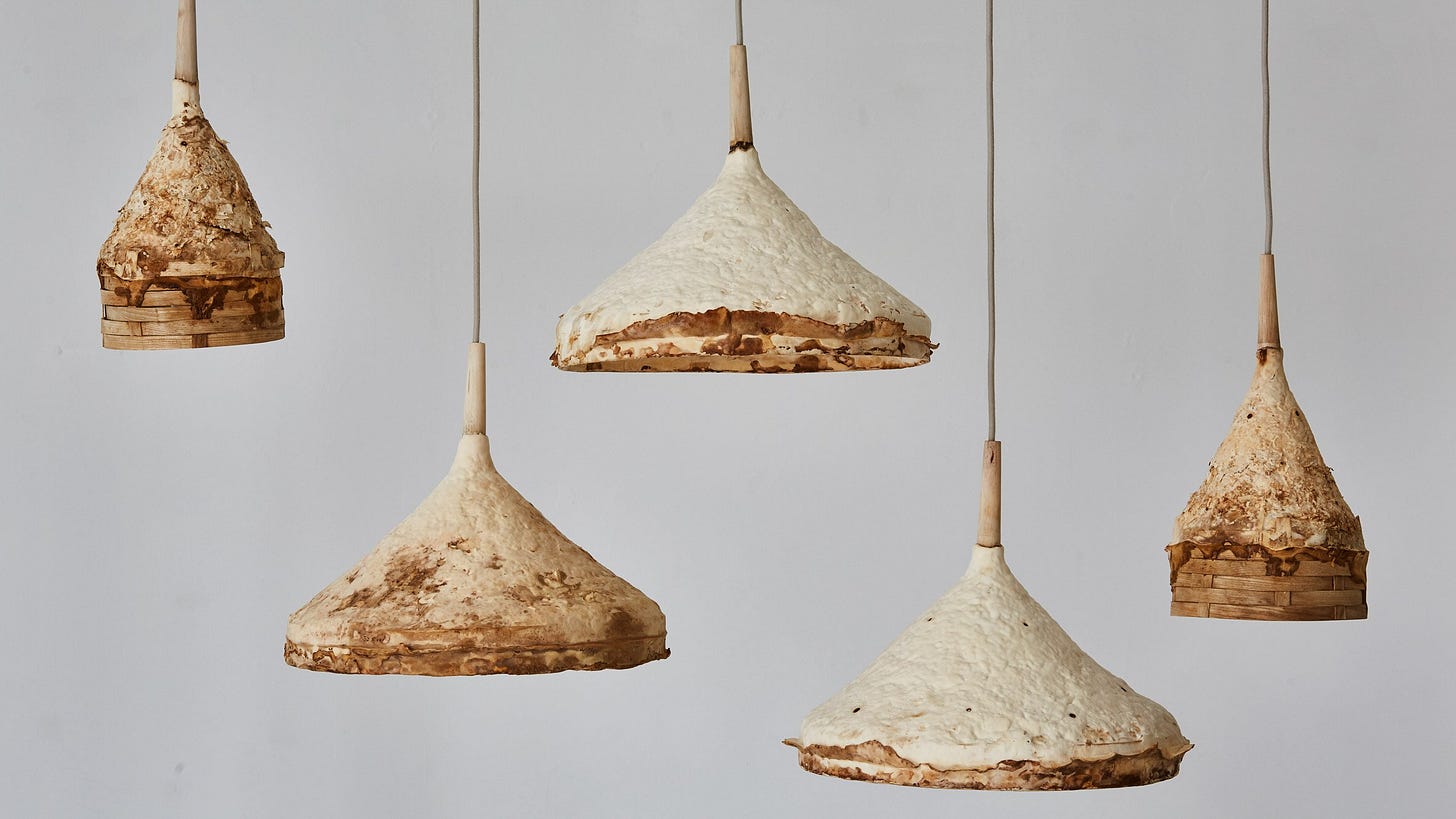#81 Spores of design
Biological computers and mycelium lamps
Design Lobster #81 has a fungal theme, we’re investigating moulds that can design subway systems and homeware that’s grown rather than made. 🍄
A warm welcome to all the new readers who signed up following reader Hugo’s kind tweet. Hope you enjoy this issue! 😊
✨Enjoying Design Lobster? Please share it with a friend, colleague or fellow designer.
Question: How can a mould design a subway?
Slime moulds – the term for around 900 different species of the Physarum family – are single-celled organisms that can join together and behave as a single body, moving to explore territory at a rate of about 2cm per hour. Experiments have shown these fungal networks can learn and even make predictions – characteristics we have previously only associated with animal brains. In a famous 2010 experiment by Atsushi Tero from Hokkaido University (shown above) oats were placed to scale in the shape of the Tokyo and it’s surrounding commuter towns, and over 26 hours a slime mould had created an approximate map of the Tokyo subway – fanning out and then pruning connections so that only the most efficient network remained. Research is underway to explore how this kind of biological computation might help design other transport systems or more resilient kinds of wireless networks.
I’m intrigued by the possibility that other species could become an active participant in the design process. Depending on the kind of design you practice, you might think of your tools as a pencil and paper, perhaps with some hand tools or various pieces of software thrown in. I like to think in the future we’ll have some biological accomplices too.
Design takeaway: What could your design learn from biology?
▶️ Watch Heather Barnett’s fascinating TED Talk about slime moulds
Object: Mycelium lamp
These unusual lamps were the outcome of a collaboration between designer Sebastian Cox and researcher Ninela Ivanova. They are made by impregnating goat willow and hazel strips with the Fomes fomentarius fungus, which bind the pieces together as it grows into a strong single element.
The trigger for this project was a desire to find a way to bind wood in a way that didn’t require harmful adhesives. Wood composite products like MDF often use chemicals like formaldehyde that are not good for the planet or human health. But as part of the research they also wanted to explore the aesthetic qualities of the fungus. Grown in special moulds, the surface of the fungus can create a patina that recalls figured walnut or cherry wood.
Design takeaway: How could you grow more of your design?
🍄 Mycelium is also being explored as an eco-friendly alternative to plastic
Quote: “Mess is the law.”
– Jeremy Till
I wanted to include an appropriately earthy quote for this week’s theme. Jeremy Till is the Head of Central St Martins in London and makes a spoonerism here of the famous Mies van der Rohe quote. As designers we often have to make sense of poorly-defined situations, finding the hidden order in the chaos. We should embrace the mess!
Have a great week,
Ben 🦞
Enjoyed this week’s Design Lobster? Let me know by clicking the heart button.
👇



